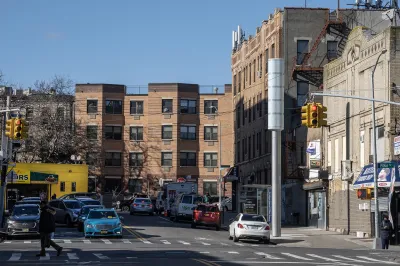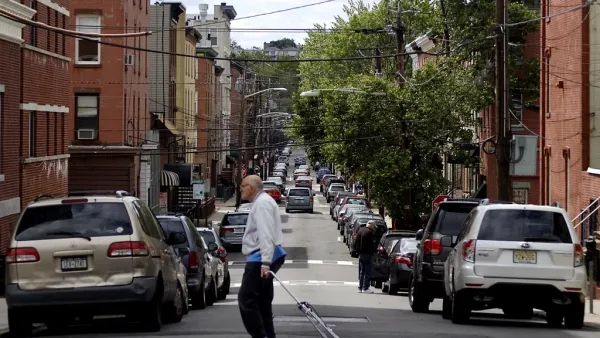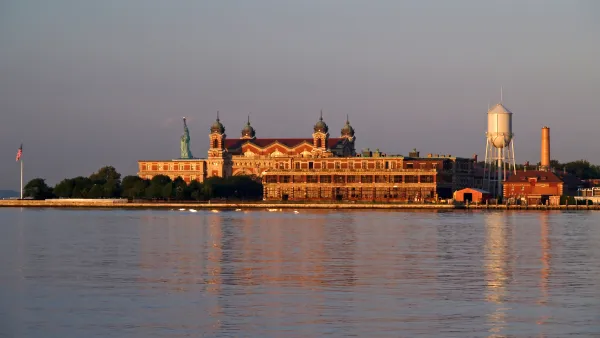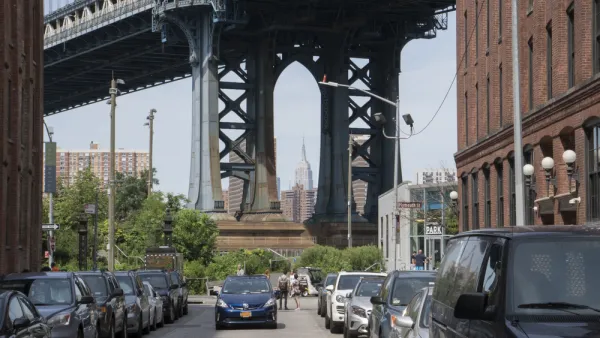More than 2,000 32-foot towers are coming to New York City street corners to improve 5G connectivity throughout the city, and residents aren’t happy, citing incompatible design and visual distraction as a threat to safety.

Over the past two years, 150, 32-foot-tall 5G towers have popped up around New York City, as part of the city’s effort to upgrade its wireless service. The initiative was announced back in 2014 and touted as one of the largest and most ambitious WiFi networks in the world. The large “smart poles” have drawn strong reaction from residents in some neighborhoods, particularly historic districts, where they say the futuristic silver and gray aesthetic, transmitter-covered tops, and even video displays stick out like sore thumbs. “At least 16 community boards across the city — representing approximately two million New Yorkers — have voiced concerns about the 5G tower rollout,” writes Dodai Stewart in a New York Times article. “[T]he state’s Historic Preservation Office recently warned that tall towers would have an adverse effect on landmark blocks in the Greenwich Village Historic District,” saying the “incompatible design” of the poles would “create a visual distraction.”
City representatives say they will not be deterred by NIMBYism, but with another 2,000 towers slated for installation citywide, the pushback will likely grow. “Many of the locations of Link5G towers (as well as LinkNYC Wi-Fi kiosks, which do not have towers) were previously home to public pay phones,” which officials say took up much more space. Nick Colivin, the chief executive of LinkNYC, told the New York Times that the mission of LinkNYC and the 5G program is to provide digital connectivity for free to everyone in the city, which he contends is critical for people to be able to “participate in the economy, apply for jobs, interact with the government, pay a parking ticket,” and more. But he knows what he’s up against, Stewart writes. “It’s always hard, in a city like New York, to change things,” he told her.
FULL STORY: Does New York City Really Need These Giant 5G Towers?

National Parks Layoffs Will Cause Communities to Lose Billions
Thousands of essential park workers were laid off this week, just before the busy spring break season.

Retro-silient?: America’s First “Eco-burb,” The Woodlands Turns 50
A master-planned community north of Houston offers lessons on green infrastructure and resilient design, but falls short of its founder’s lofty affordability and walkability goals.

Delivering for America Plan Will Downgrade Mail Service in at Least 49.5 Percent of Zip Codes
Republican and Democrat lawmakers criticize the plan for its disproportionate negative impact on rural communities.

Test News Post 1
This is a summary

Test News Headline 46
Test for the image on the front page.

Balancing Bombs and Butterflies: How the National Guard Protects a Rare Species
The National Guard at Fort Indiantown Gap uses GIS technology and land management strategies to balance military training with conservation efforts, ensuring the survival of the rare eastern regal fritillary butterfly.
Urban Design for Planners 1: Software Tools
This six-course series explores essential urban design concepts using open source software and equips planners with the tools they need to participate fully in the urban design process.
Planning for Universal Design
Learn the tools for implementing Universal Design in planning regulations.
EMC Planning Group, Inc.
Planetizen
Planetizen
Mpact (formerly Rail~Volution)
Great Falls Development Authority, Inc.
HUDs Office of Policy Development and Research
NYU Wagner Graduate School of Public Service





























